
Key Points
-
- High Beta/Low Vol is Moving to a Key Zone
- Another Breakdown in Discretionary/Staples Deflates the Bulls
- Copper/Gold Makes an Attempt to Stabilize – Will it Hold?
- Compression in the Small Cap/Large Cap Ratio Draws Attention
- Gradual Risk in High Yield Credit Spreads Sends a Clear Risk-Off Message
Key Themes and Relationships
High Beta vs Low Volatility
The High Beta/Low Volatility ratio continues its descent below declining 50 and 200-day moving averages in a bearish momentum regime. The summer 2020 highs are set in its sights, which mark an important high in both the ratio and equity risk appetite post-COVID crash.
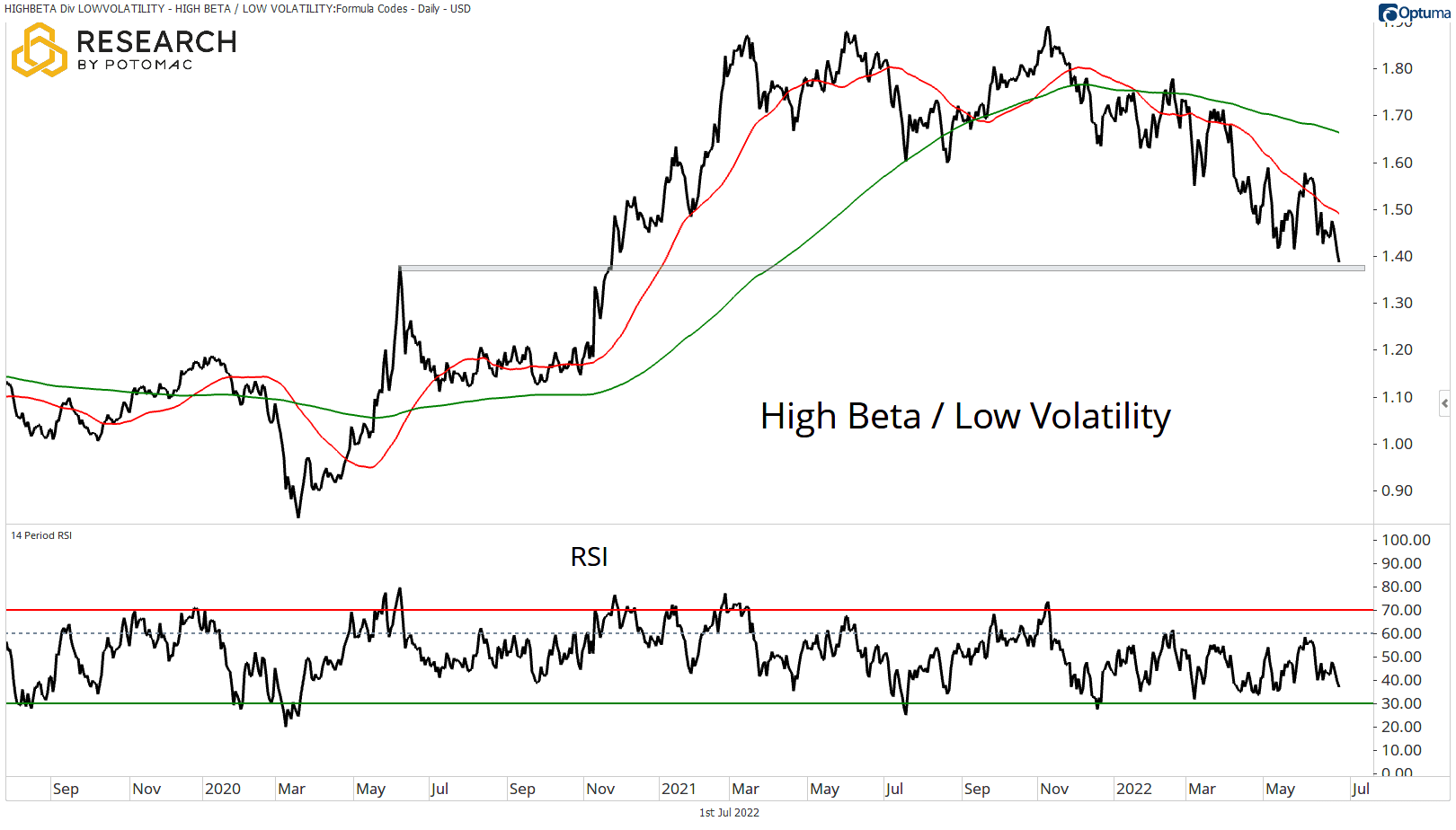
Consumer Discretionary vs Consumer Staples (Equal Weight)
The Discretionary/Staples ratio broke short-term support at the highlighted zone at the May lows, continuing to decline below the falling 50 and 200-day moving averages. Note that the ratio’s declining 50-day moving average is in line with the long-term highlighted zone at the pre and post-COVID low and high, and will be an area investors watch for resistance, should risk appetite begin to increase.
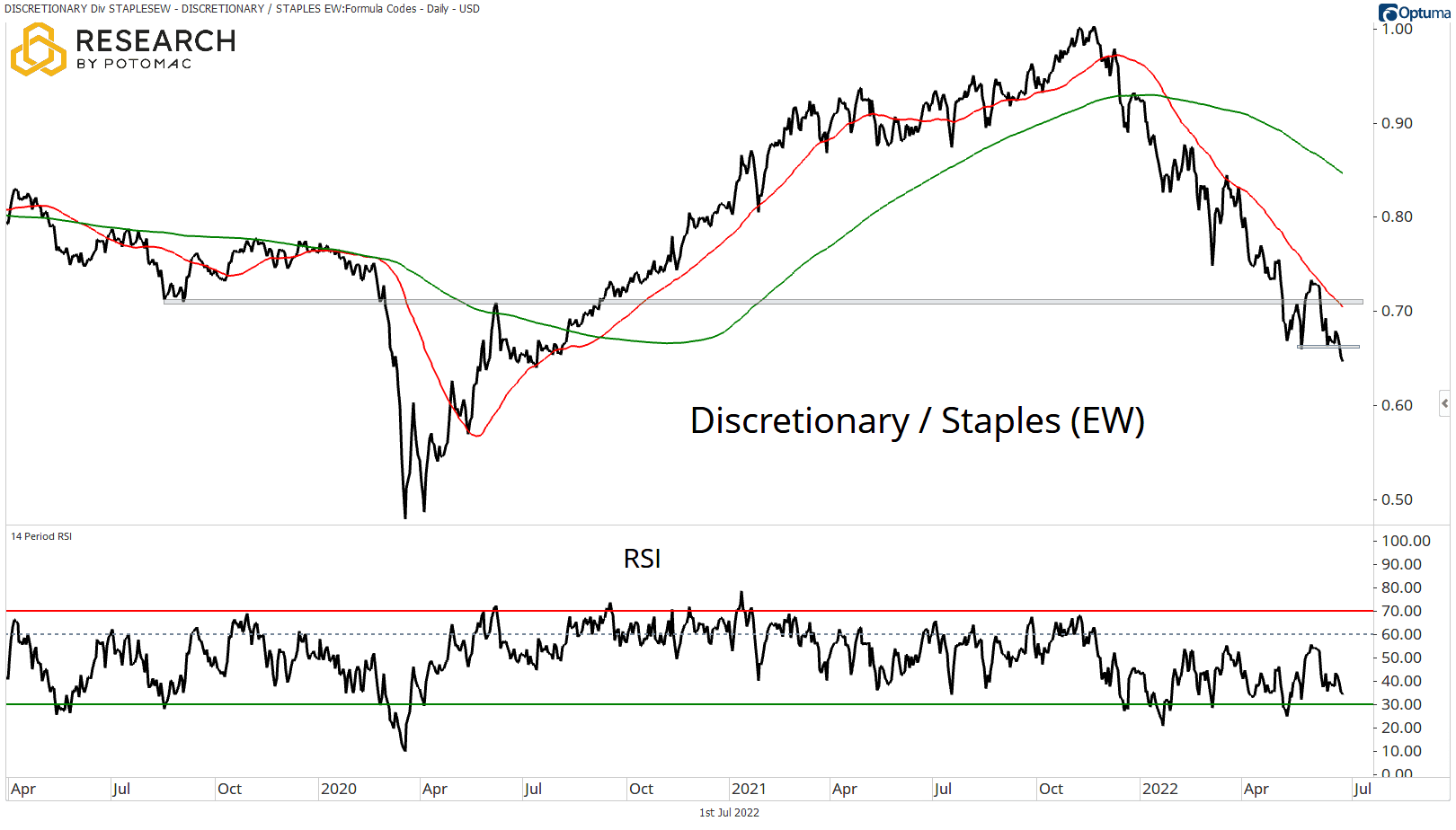
Lumber vs Gold
The Lumber/Gold ratio continues to rally out of long-term relative support toward the declining 50-day moving average, which is below the flat 200-day moving average. In a bullish development for the ratio, RSI has broken out of the downtrend line that has marked lower highs in the indicator since Q4 of last year. Until the 50-day moving average can be taken out to the upside, the price action appears to simply be a countertrend move.
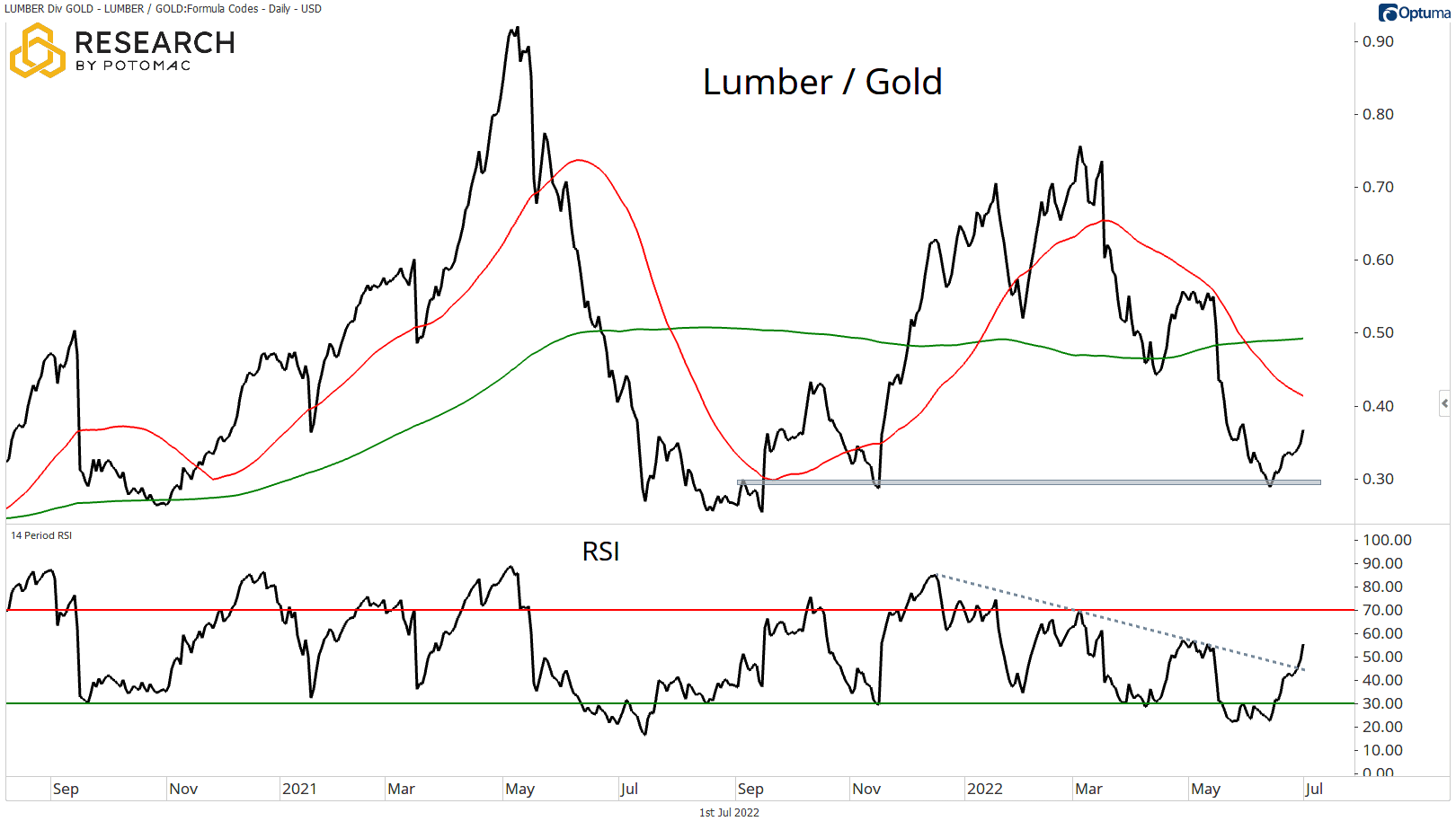
Copper vs Gold
The Copper/Gold ratio has made an attempt to stabilize after last week’s cascade to the downside below declining 50 and 200-day moving averages. RSI continues to remain oversold, printing readings below the 30 level and confirming the bearish trend.
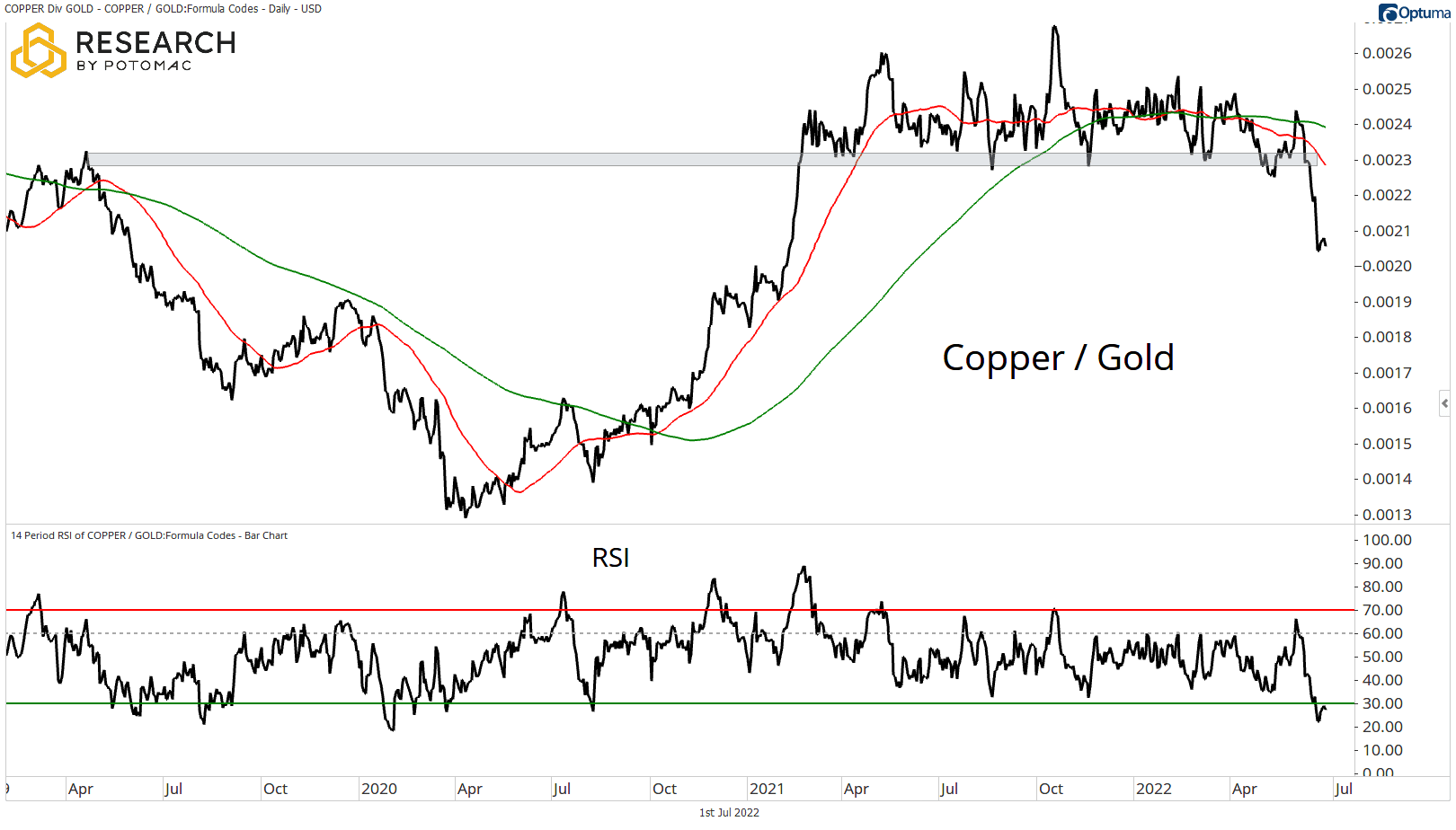
Small vs Large
The Small Cap/Large Cap ratio continues to put up a fight around both 50 and 200-day moving averages. Note that the moving averages are compressed along with the ratio as it remains in the middle of the highlighted trading range. In a bullish turn of events, RSI has moved up from the 40 level and the lower bound of a bullish regime, keeping investors on their toes as the ratio attempts to provide footing for a directional move.
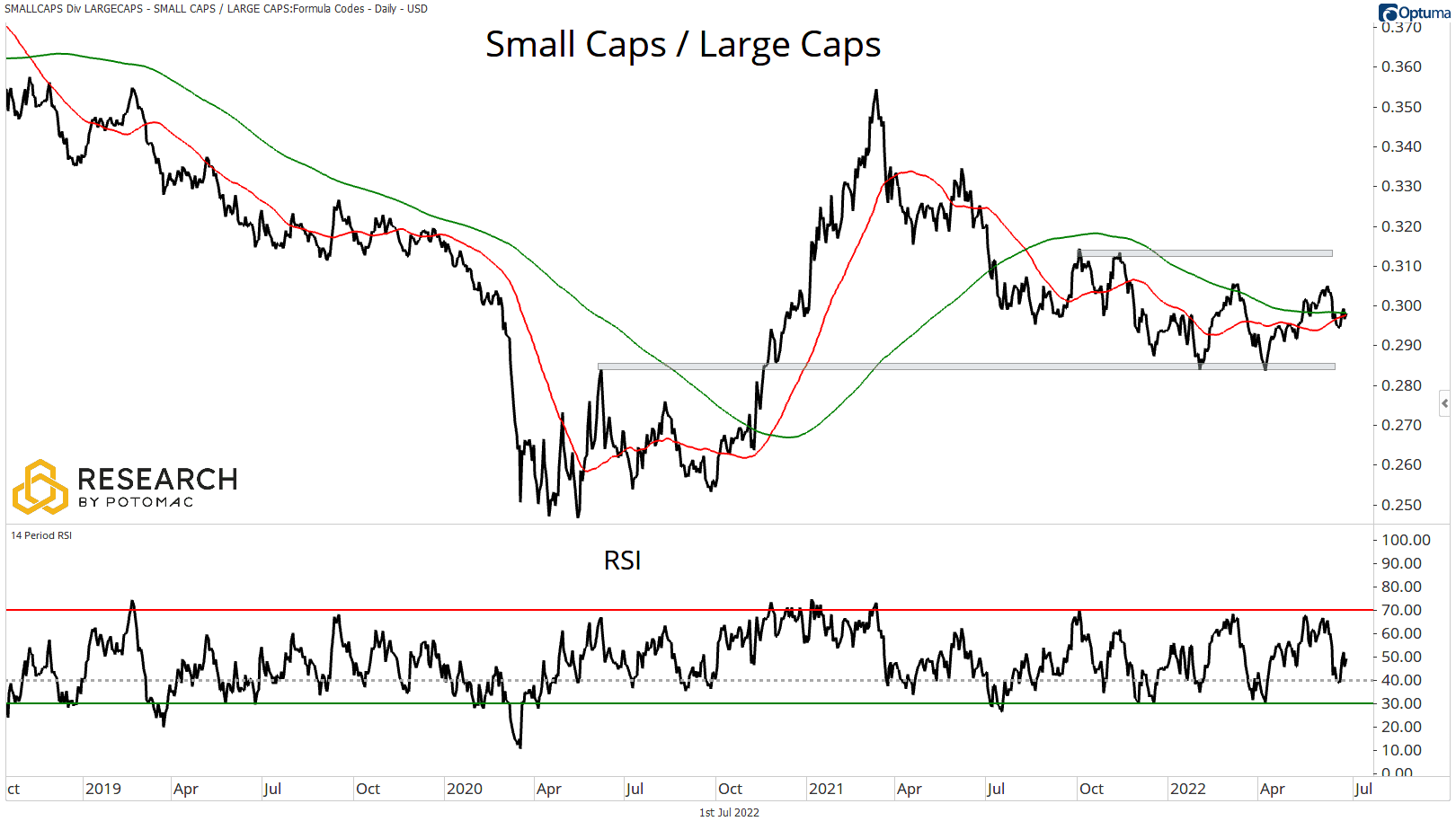
Growth vs Value
The Growth/Value ratio has sliced through the declining 50-day moving average for a test of relative long-term support at the highlighted zone. RSI was rejected at the 60 zone, the upper end of a bearish regime. Until the ratio can turn the 50-day moving average upwards with RSI breaking out of a bearish regime, this bias remains with the bears.
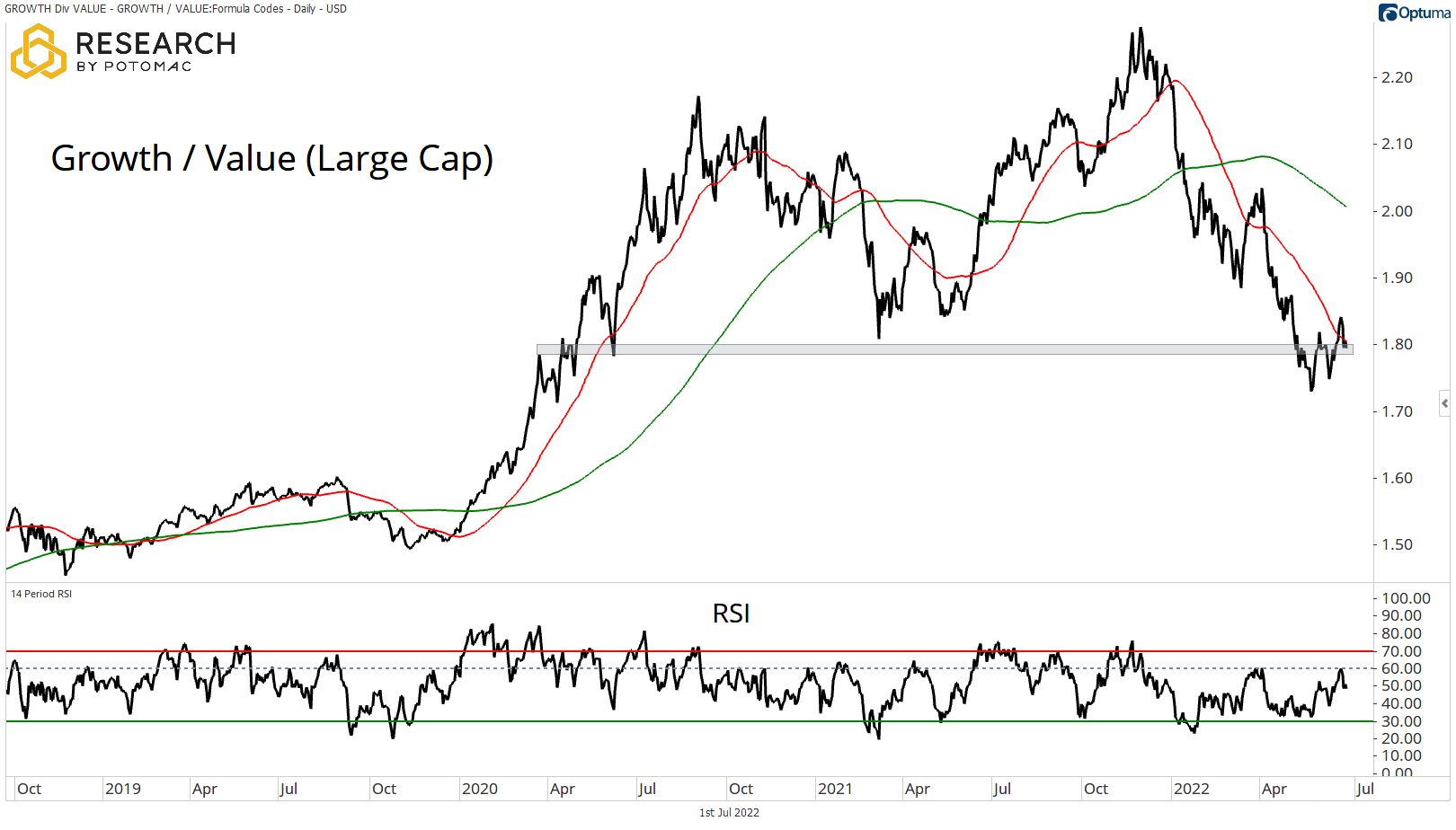
High Yield vs Treasuries
High Yield Credit Spreads have breached the 5.45% resistance zone that we called out in our note last week, signaling a clear risk-off message within the bond market as spreads continue to trade above rising 50 and 200-day moving averages. RSI prints another overbought reading above the 70 level, confirming the uptrend. Again, we note that the price action has been a gradual shift to the upside rather than a panic spike that has characterized previous market shocks, and will likely take time to reverse.
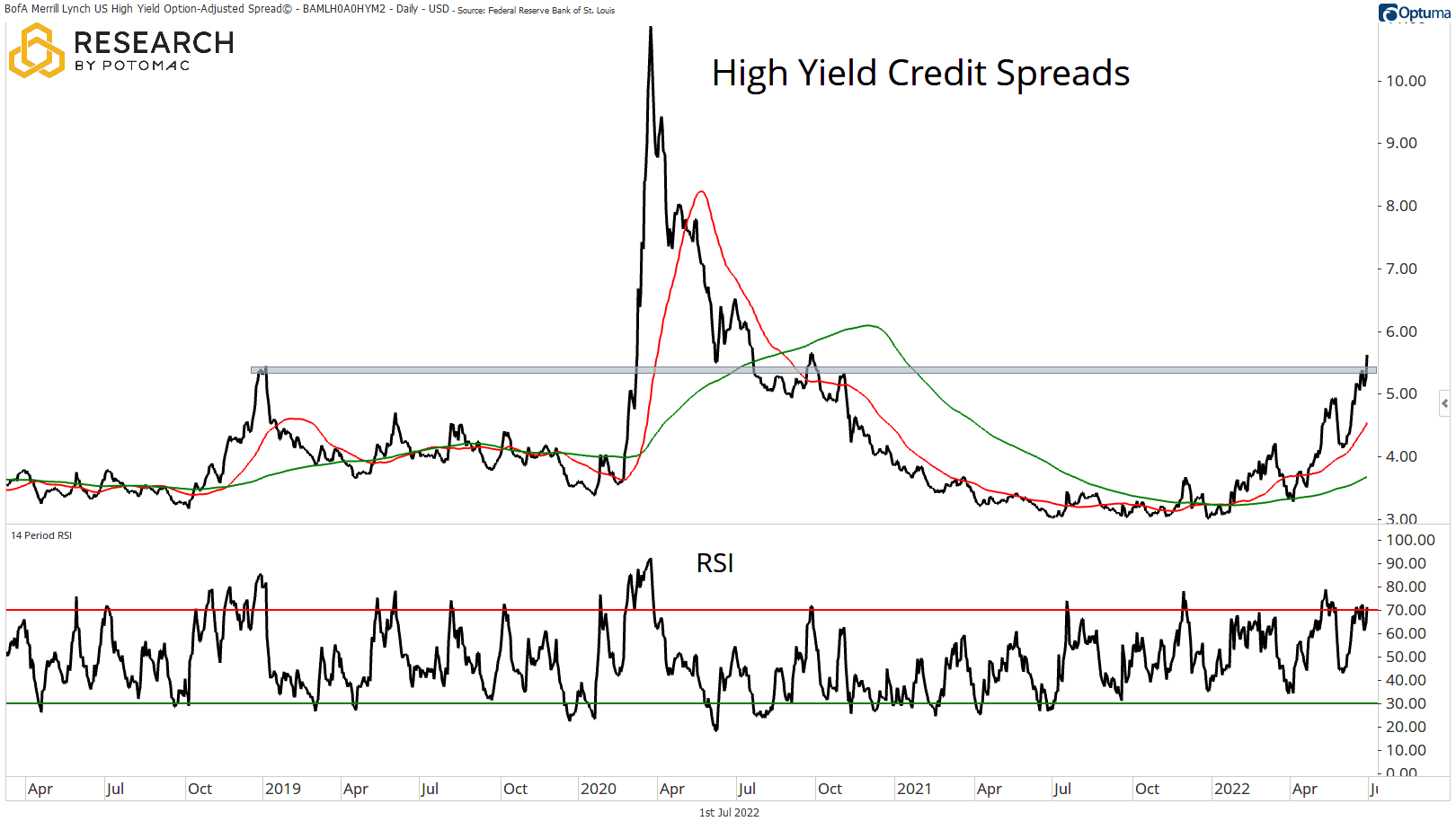
Take-Aways
Risk off trends largely continue in the intermarket relationships that we track across the board. Growth bulls continue to be disappointed, and the Lumber/Gold ratio’s upside move would be prudent to interpret as countertrend at these levels. The most noteworthy development across asset classes continues to be the gradual uptrend in High Yield Credit Spreads, a signal of the bond market’s increasing unwillingness to take risk.
Disclosure: This information is prepared for general information only and should not be considered as individual investment advice nor as a solicitation to buy or offer to sell any securities. This material does not constitute any representation as to the suitability or appropriateness of any investment advisory program or security. Please visit our FULL DISCLOSURE page.
